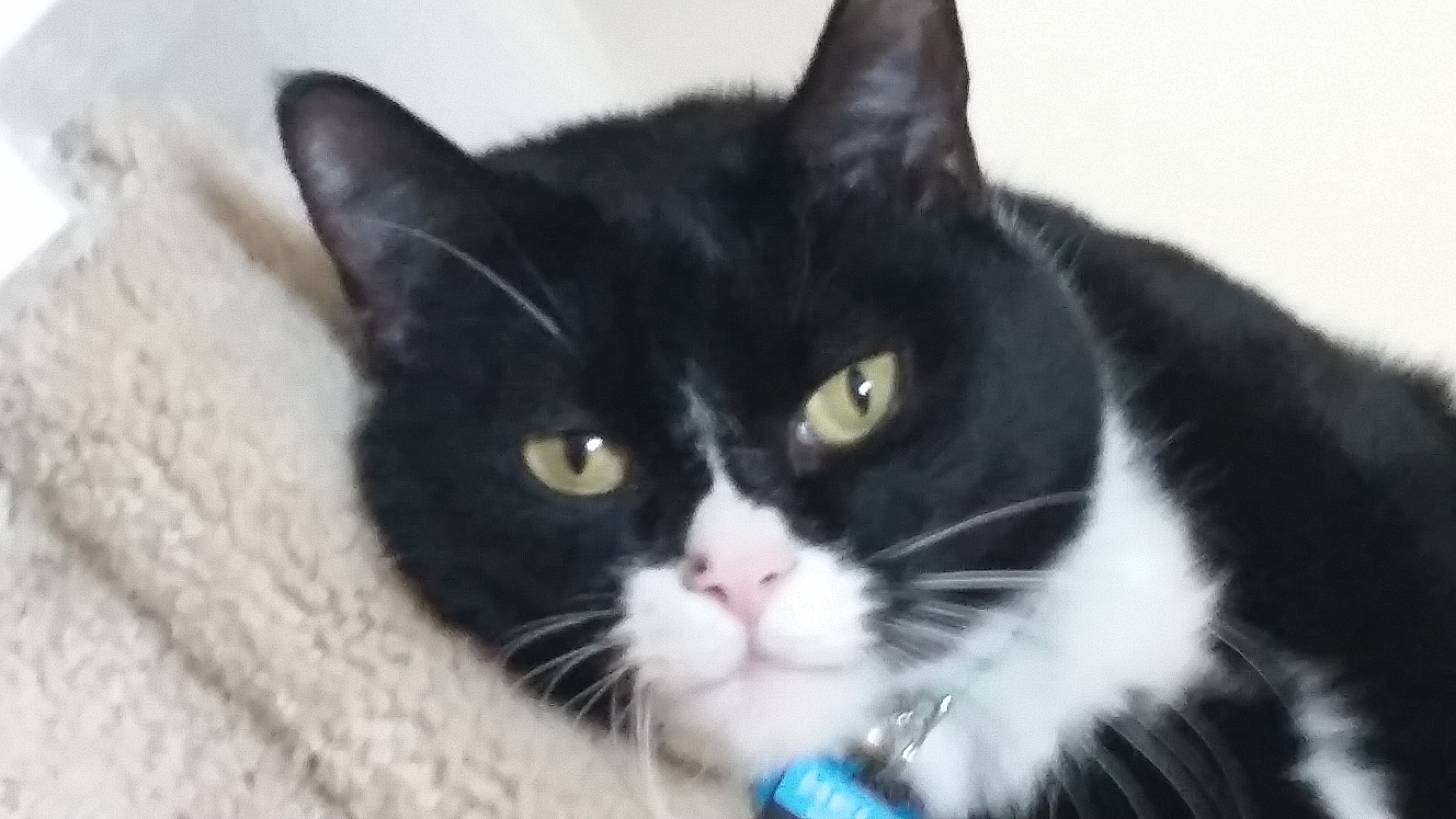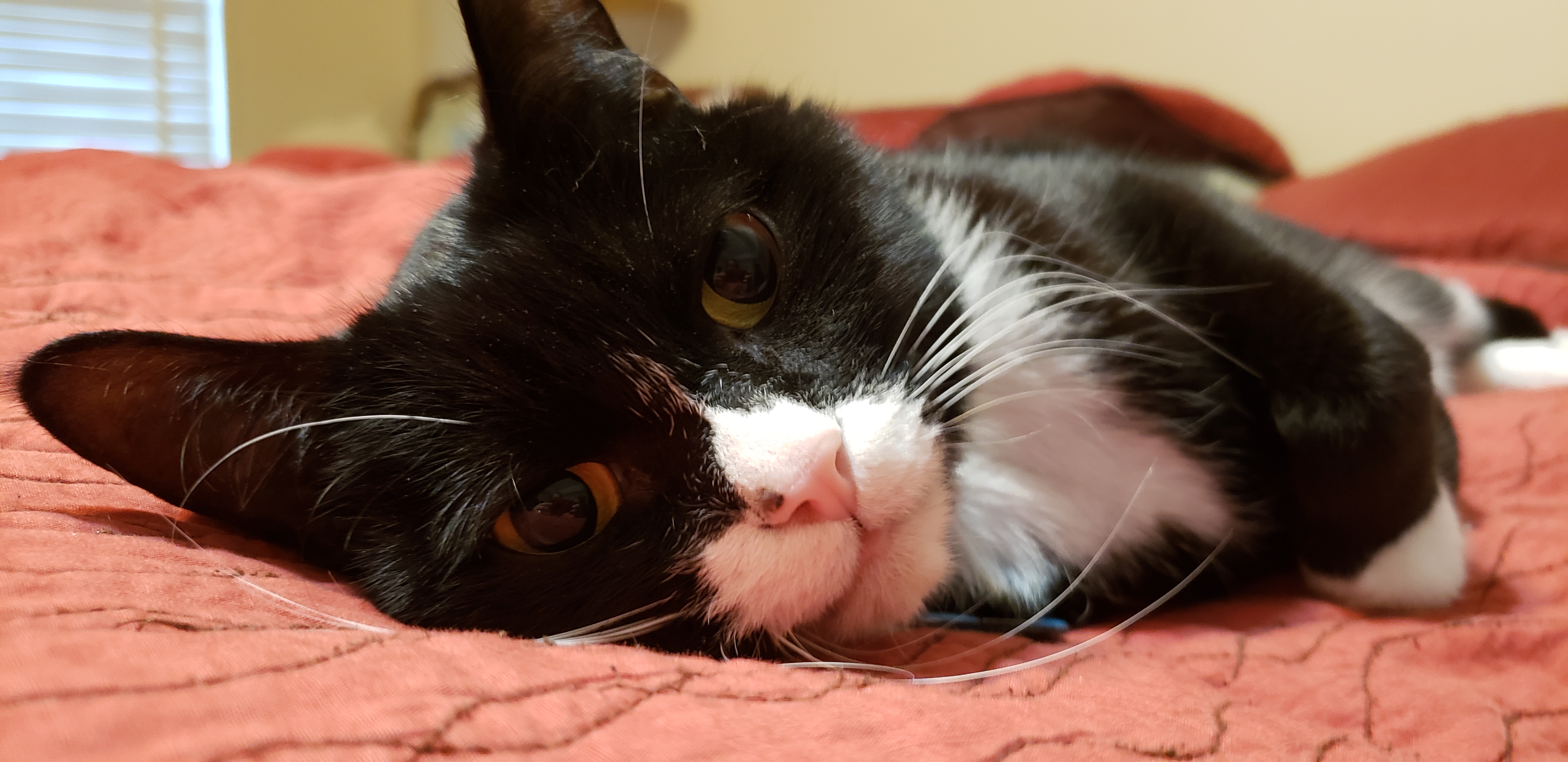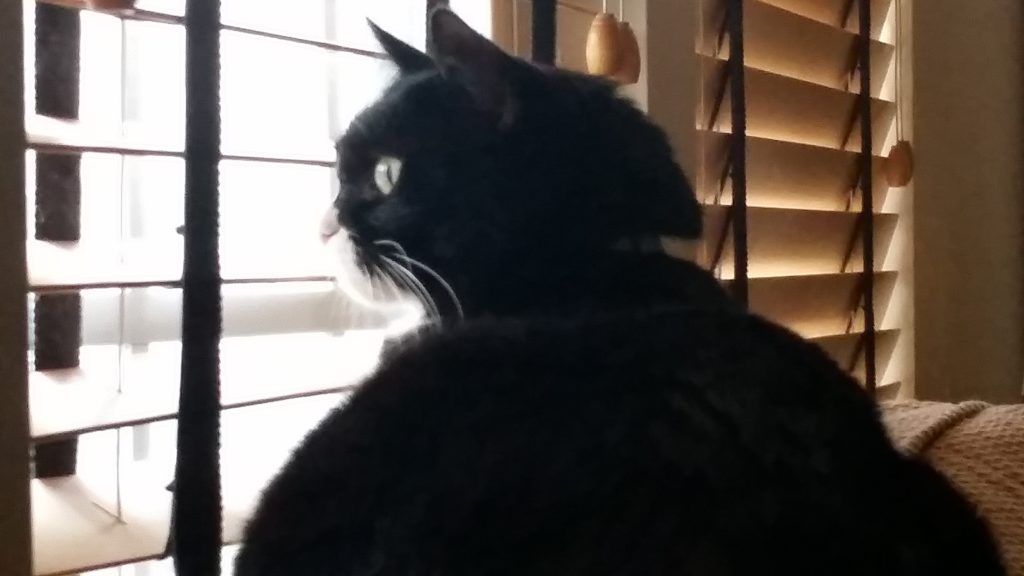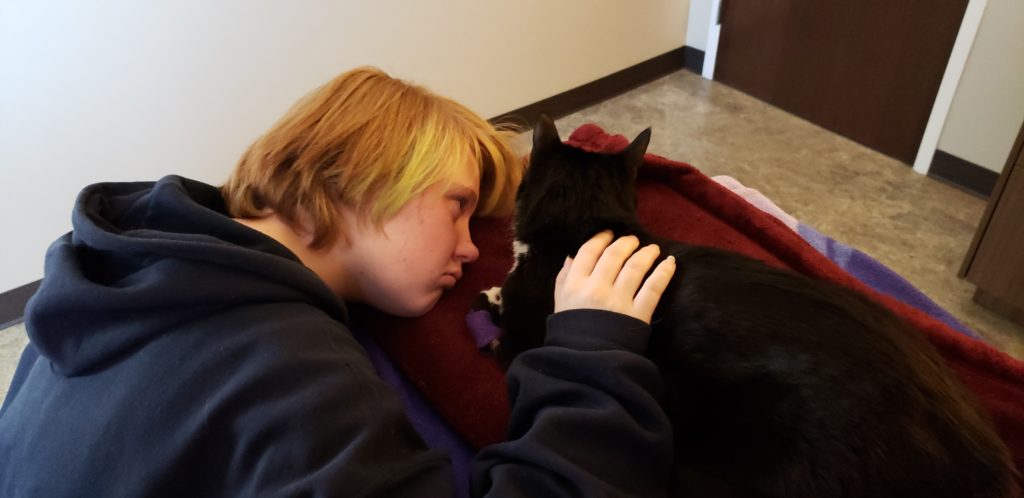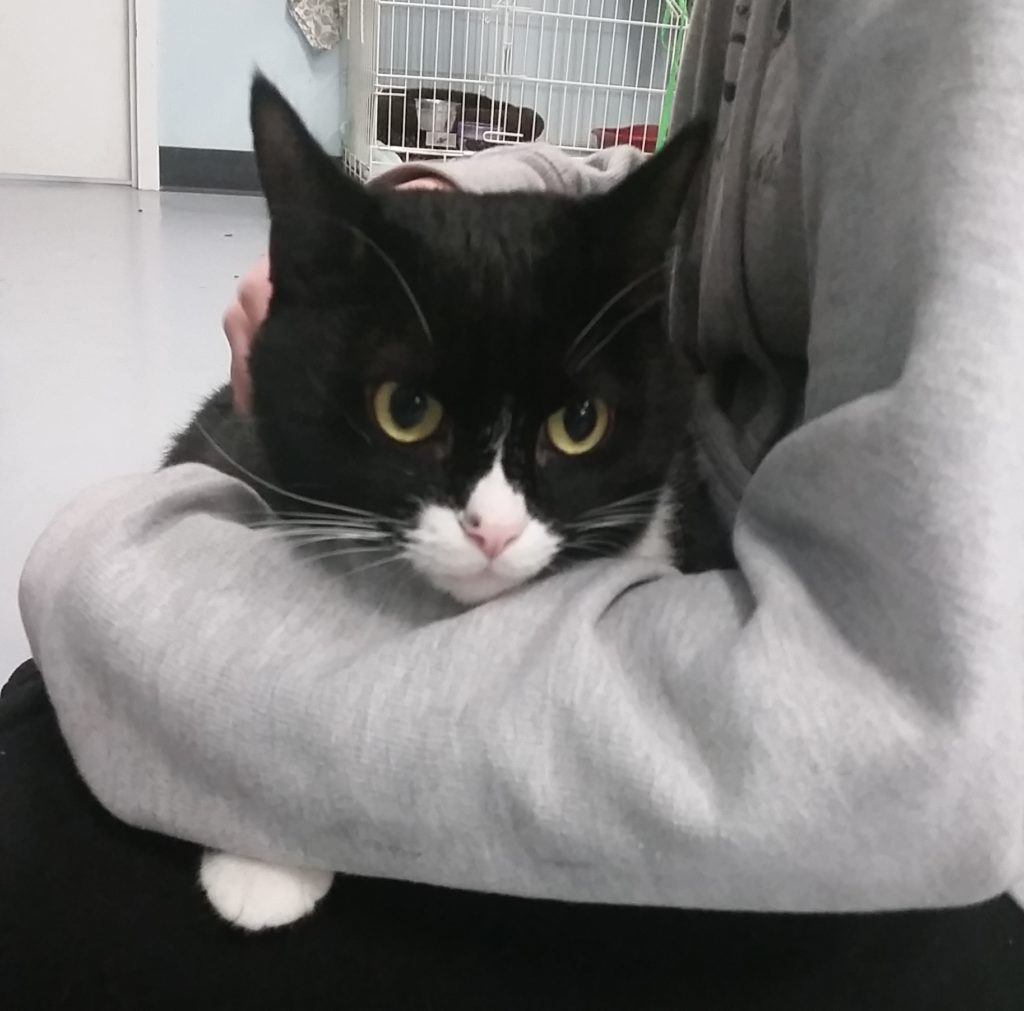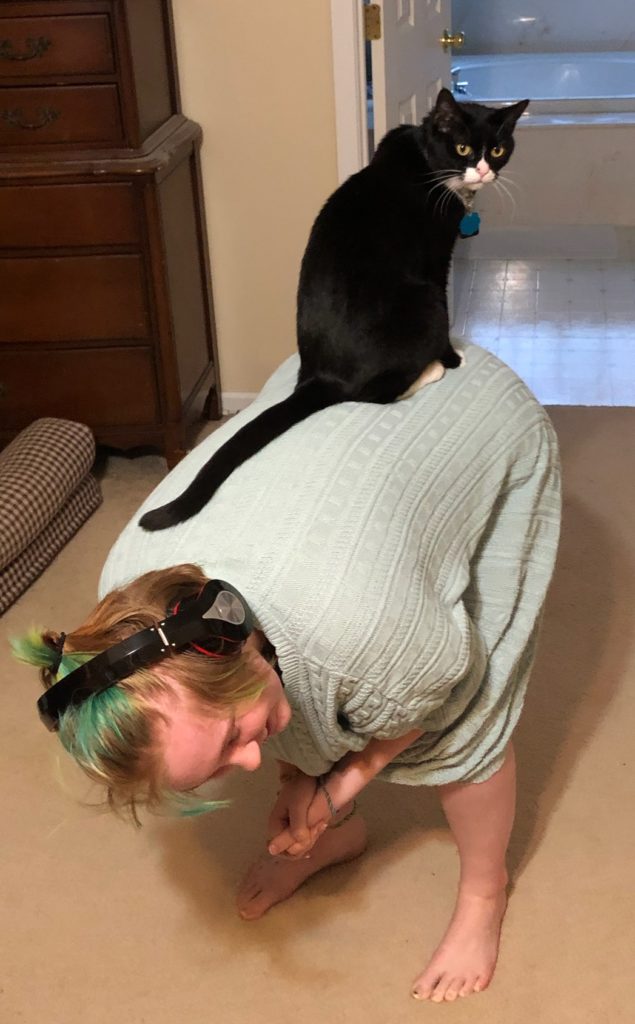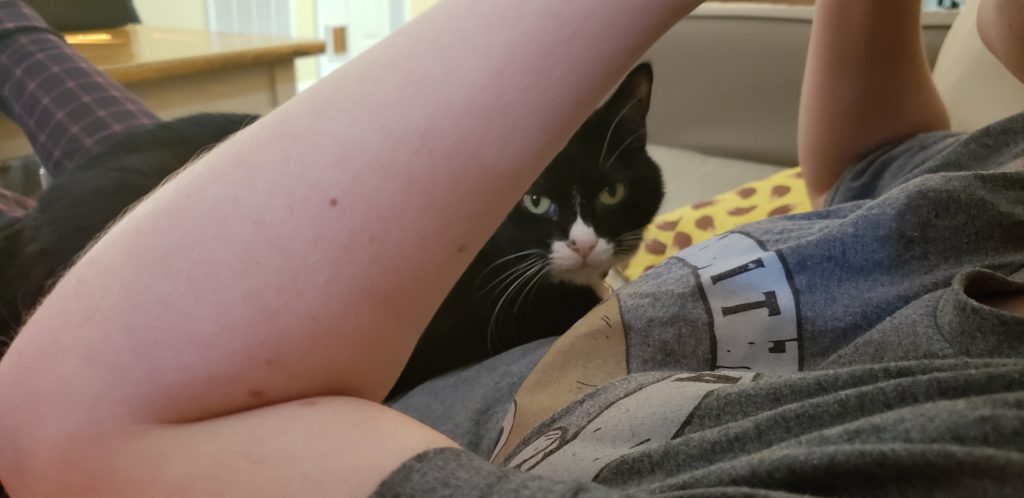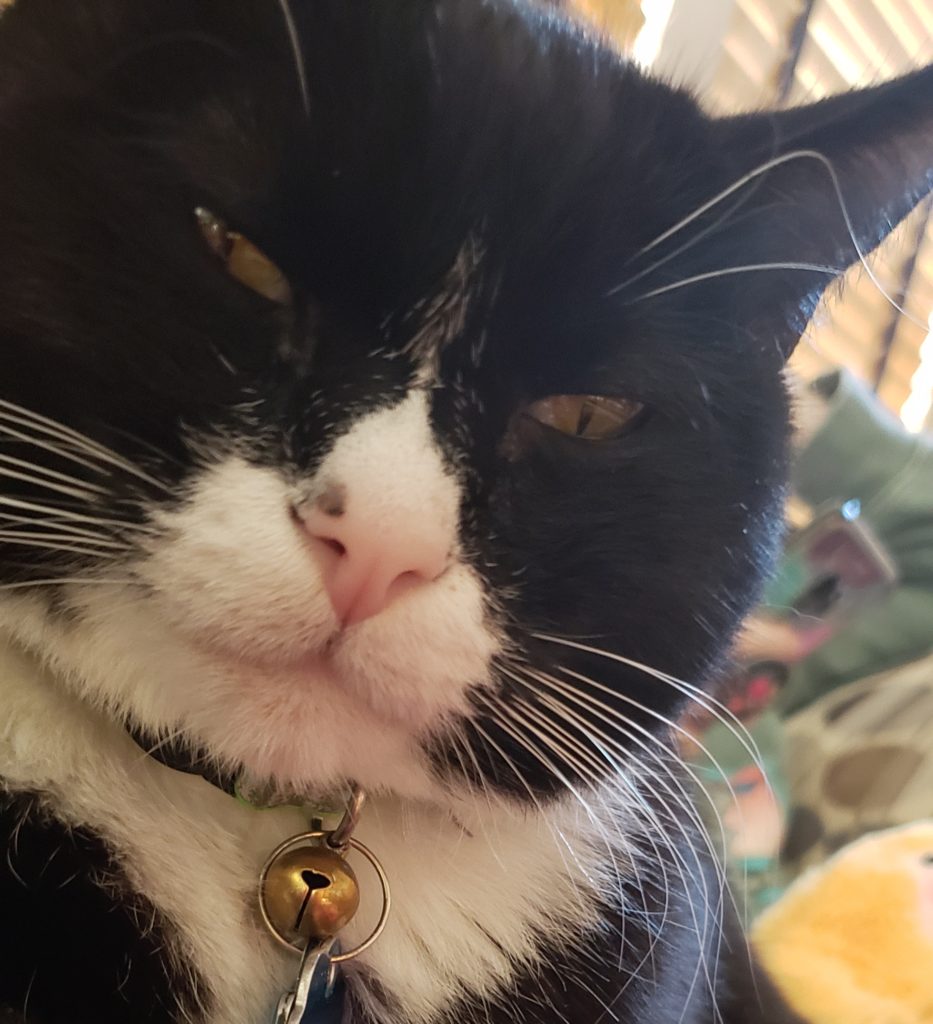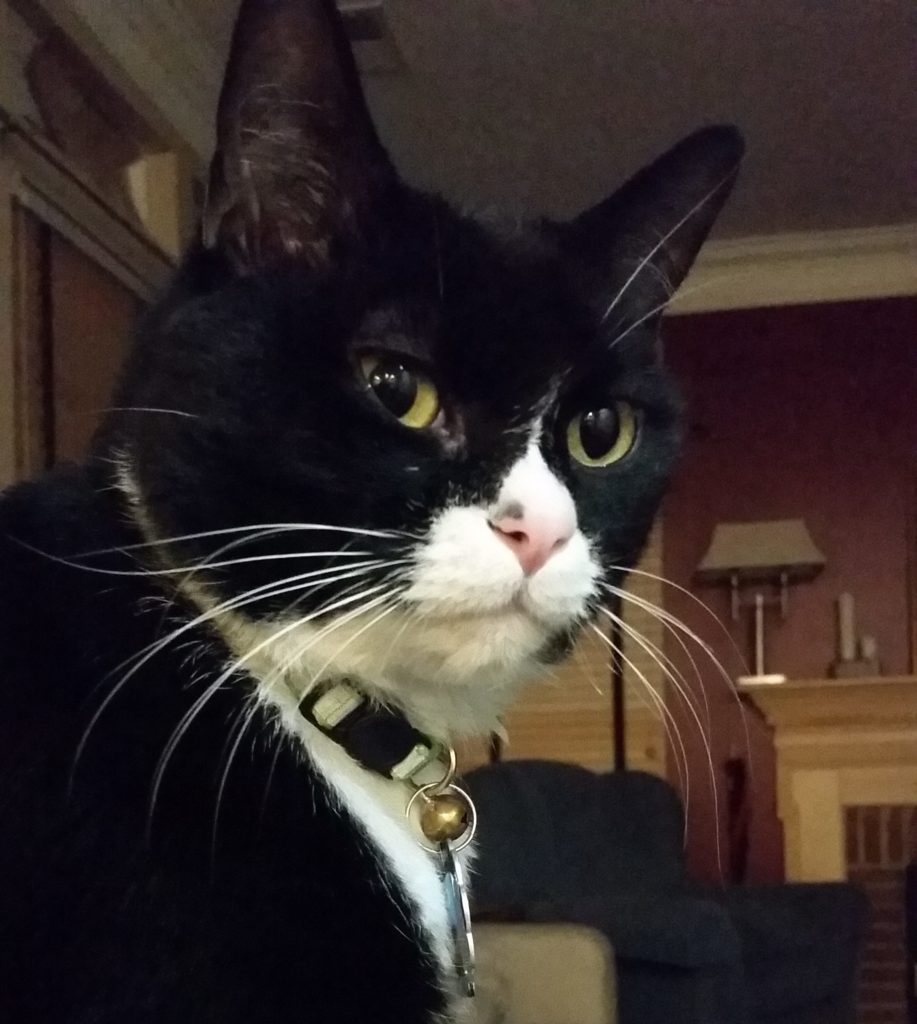In September 2017 my daughter adopted Jacob the Cat. She wanted a cat of her own and committed to taking care of him – feeding him, cleaning his litter, paying vet costs, training him (as much as a cat can be trained) and generally just loving on the cat. She picked Jacob and he was a wonderful addition to our household.
He and Mini the Cat never became friends (and is part of the reason we ended up quarantining Mini to the master suite in late 2017), while he and Dobby the Dog had a grudging acceptance of each other (but nothing more – despite Dobby’s desperate desire to be friends). But Jacob absolutely loved CG and followed her around the house wherever she went. He had a tremendous personality and was so fun (even when he broke the house rules).
Sadly, two evenings ago he started to behave strangely, stopped eating, could not use the litter box, and was just not himself in any way. It came out of the blue and I told CG that I would take him to the vet the following morning.
Yesterday at 8 a.m. I called the vet and after describing his symptoms they advised I take him to the emergency vet on the off-chance that Jacob was already blocked. “Blocked” is similar to kidney stones in that the urine is literally unable to flow and leave the body. In cats it can cause bladder rupture or toxins being released into the body in addition to kidney failure. By the time I got him to the emergency vet yesterday morning at 9 a.m., he was completely blocked.
The vet gave me two options: have a catheter inserted to drain the backup of urine, or put him down.
“WHAT?” I said, surprised. “Put him down?”
The vet nodded and said that male cats are prone to these infections, and that they only get worse the more times it happens. The last time Jacob had this was only 8 months ago. We caught it before he was blocked and so we were able to treat it with muscle relaxants and other medication, as well as adding a prescription wet food into his diet. The vet told me that we could do the catheter treatment this time around but that he may get another infection in 3 months, or 12 months, or 24 months. He said that when he gets his next infection (“when not if,” he stressed) he would likely only recommend putting him down since even surgery would not guarantee it wouldn’t continue happening. The catheterization would cost anywhere between $1400-2000.
“I can’t make this decision – it’s my daughter’s cat.”
“Can you call her?”
“She’s only 15 and in school, but I’ll try.”
I called the school and asked them to pull her from class and have her call me ASAP. About 10 minutes later my phone rang, and I quickly went through the situation with her. She began crying, and I told her I’d pick her up from school and bring her to the emergency vet so she could decide what she wanted to do and be there with Jacob.
And that’s what I did. I drove to the school, picked her up, and on the way to the vet as she cried I went through her options. I told her that Denis and I completely supported her if she wanted to do the procedure, and would pay for half. I reminded her that this procedure would merely be to give her additional time with Jacob until the next time it happens. I also told her not to feel guilty if she opted to send him over the rainbow bridge, because the vet himself was recommending it.
Once back at the vet we asked some additional questions.
Q: “If we feed him more wet food in order to provide more water to his diet, will that help?”
A: “No guarantee it’ll do anything but prolong the inevitable.”
Q: “If it is stress-related, can we make changes to reduce stress?”
A: “If nothing has changed recently in his daily life, it is likely not caused by stress.”
After more debate and conversation with the vet, I asked CG what she wanted to do.
Through tears, she said she thought it was best to put him down rather than have him go through a catheter procedure (which would undoubtedly stress him out in addition to having recovery time after a 2-day hospital stay) and that it would only delay the inevitable.
Decision made, the vet brought Jacob into the room and let us love on him for a while, with a call bell to let them know when we were ready to inject the medicines. After about 10 minutes CG pressed the bell.
The vet came in and told her what the procedure would be, and told her she could stay or leave – it was up to her.
“I want to be with him,” she said, tears in her eyes.
He nodded, and then softly talked through every step as he did it, treating Jacob very tenderly and gently, and letting CG continue to pet and love on him.
After the last injection he checked for a heart rate and quietly said, “He’s gone, I’m so sorry for your loss,” before quietly leaving the room.
CG and I stayed there, continuing to pet him, each crying and saying our goodbyes.
Finally just after 1 p.m., we left the vet’s office.
When we arrived home we de-catted her room and discussed the possibility of getting another kitty, deciding it was best to wait for summer time, but that yes, she’d probably get another one – a female this time (to avoid the blocking issue, which tends to only happen in male cats) and perhaps a bit younger (Jacob was around 4-5 years old when we adopted him).
Rest in peace, Jacob. You were a wonderful cat and even though you were only with us for less than two years, you made such a powerful impact on all of us and we will miss you terribly.
